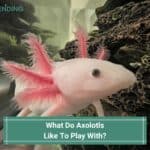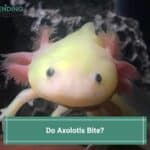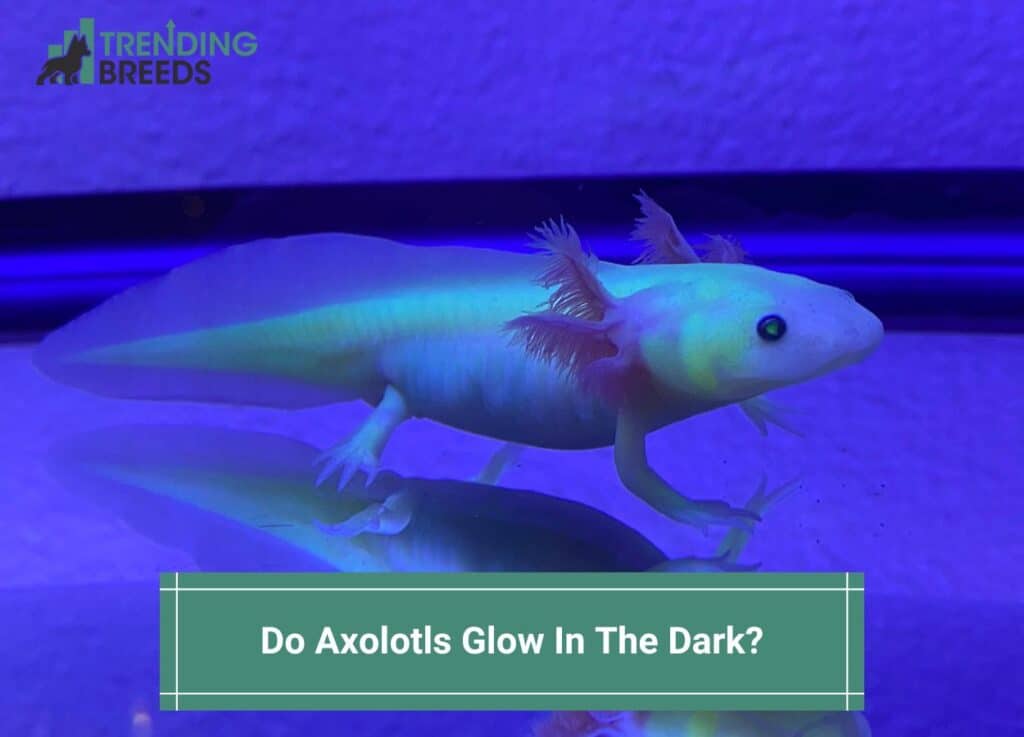
Axolotls possess a distinct and captivating appearance, often capturing attention with their unique features. With their translucent skin, someone might wonder if glow-in-the-dark axolotls exist.
Certain axolotls have genetic engineering to carry a specific protein known as green fluorescent protein within their cells.
This genetic modification causes them to emit a vibrant green hue when exposed to ultraviolet light.
It’s essential to note that this glow does not occur naturally but is a consequence of human intervention.
However, once the genetic alteration occurs, the axolotl tends to pass down this green fluorescent protein to its offspring.
Not all axolotls possess this glowing ability, and no known axolotls can generate their glow without exposure to UV light.
Read on to learn more.
Before you scroll further down this guide, check out these other animal-related articles: Axolotl Shedding: What To Do And Why and Do Rats Have Bones?.
Table of Contents
Do Axolotls Glow?
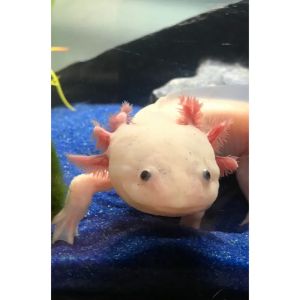
Typically, most axolotls do not possess the ability to glow.
However, a specific variation of axolotls with a modified coloration appears to emit a glow under particular conditions.
It’s important to note that axolotls are not bioluminescent, meaning they do not naturally produce their glowing light.
Instead, the axolotls that exhibit a bright appearance have a genetic component called Green Fluorescent Protein (GFP) within their cells.
Axolotls hold significant value in scientific research due to their remarkable regenerative abilities, capable of regrowing limbs and even repairing severely damaged nervous system tissue.
Scientists study axolotls to gain insights into these regenerative processes and potentially apply them to human tissue regeneration following trauma or limb loss.
While studying axolotls, researchers discovered that introducing Green Fluorescent Protein from certain jellyfish species into axolotl DNA allowed them to visualize axolotl cells in new ways.
That created a specific axolotl color variant that emits a glow when exposed to particular ultraviolet (UV) light wavelengths.
Notably, this glowing effect is exclusive to the axolotl variant known as GFP axolotls, typically derived from albino axolotls that breeders or the scientific community have genetically modified.
Other axolotl variations showcase diverse and captivating colors, ranging from dark-skinned and spotted to a pale pinkish-white hue called Leucistic.
It is crucial to emphasize that axolotls cannot generate their glow independently.
They do not possess intrinsic bioluminescence, and their dark environment does not trigger glowing effects.
The apparent glow observed in GFP axolotls results from the interaction between the fluorescent protein in their DNA and specific UV light wavelengths.
What Light Do Axolotls Glow Under?
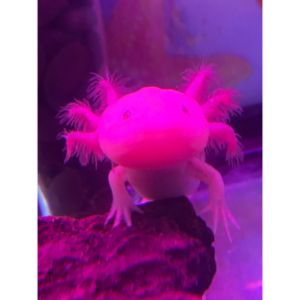
Axolotls that possess the green fluorescent protein (GFP) will emit a glow when exposed to ultraviolet (UV) light.
Commonly known as blacklights, UV lights are utilized by owners of GFP axolotls to trigger the reaction between the UV light and the green fluorescent protein in the axolotl cells, resulting in a vibrant green glow.
Blacklights are specifically best because they emit UV light while producing minimal “usable” light compared to regular light bulbs for illuminating a room.
That allows the area where the axolotl is present to remain dark enough for the glowing effect to be visible.
In some instances, axolotls with GFP traits may exhibit a subtle glow even under normal lighting conditions, such as sunlight filtering through a window.
However, this glow tends to be dimmer and primarily manifests as a blue or green brightness around areas where the tissue is thinner, such as the eyes.
To fully appreciate the glowing effects of a GFP axolotl, it is best to have a dimly lit room and tank, along with a blacklight UV bulb.
The UV bulb emits faint ultraviolet light, creating a captivating living glow from your axolotl.
Why Do Axolotls Glow Under Light?

Certain axolotls can glow under specific lighting conditions due to their genetic makeup’s green fluorescent protein (GFP).
However, it’s important to note that GFP is not naturally occurring in axolotls and can only happen in a laboratory setting through genetic modification.
Once an axolotl has had genetic modification to incorporate GFP in their cells, this trait will probably occur in their offspring.
GFP is a protein that occurs naturally in a specific type of jellyfish and exhibits a vibrant yellow color.
When exposed to ultraviolet (UV) light, such as that emitted by a blacklight, GFP becomes UV reactive and emits a brilliant neon green glow.
In most cases, the axolotls that exhibit glowing characteristics are albino or leucistic, lacking pigmentation in their skin, or having extremely light coloration.
This lack of color allows the vibrant green fluorescence of the GFP to be prominently visible under the appropriate lighting conditions.
Initially, scientists utilized GFP in axolotls to aid their research on tissue regeneration and how axolotls rebuild and repair body tissues following injuries or stress.
As axolotls with GFP continued to breed, they became sought-after in the pet trade industry.
People are fascinated by their unique glowing ability, solely due to the green fluorescent protein within their bodies.
Is It Safe For Axolotls To Glow?
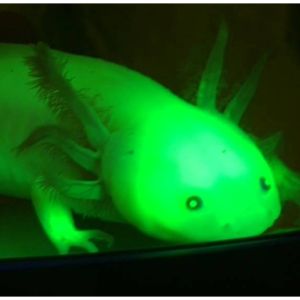
The introduction of green fluorescent protein (GFP) into axolotl DNA has no detrimental effects on axolotls’ health.
However, it’s important to note that making axolotls glow through UV exposure can be potentially hazardous.
Similar to humans, excessive UV exposure can be harmful to axolotls.
In their natural habitat, axolotls, receiving limited UV exposure, reside at the bottom of lakes.
Axolotls have sensitive skin, and UV light can irritate them.
Furthermore, as they lack eyelids, prolonged and direct exposure to UV light can lead to eye irritation and even burns.
If you have a GFP axolotl and wish to observe its glow under UV lights (blacklights), it is advisable to do so in short durations.
Some owners report keeping their UV lights on for 15 to 45 minutes daily, while others prefer shorter exposure times.
One standard recommendation is to shine the UV light through only a portion of the tank.
That allows the axolotl to choose whether to enter the UV light or stay away from it based on its preferences and comfort.
This approach helps ensure the well-being and safety of the axolotl while still enjoying its glowing characteristics.
FAQs About Glowing Axolotls
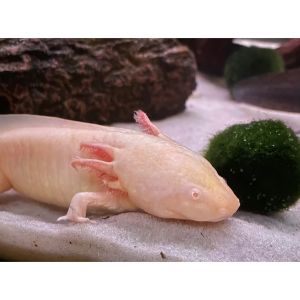
How much does a glow-in-the-dark axolotl cost?
The cost of a glow-in-the-dark axolotl can vary depending on various factors such as age, size, color variation, genetic lineage, and the breeder’s or seller’s reputation.
On average, the price range for glow-in-the-dark axolotls can be between $50 to $200 or more.
It’s important to note that prices may vary, and rare or highly sought-after variations of glow-in-the-dark axolotls may command higher prices in the market.
Additionally, additional costs may be associated with shipping or purchasing necessary supplies for their care.
How do you make an axolotl glow in the dark?
Genetic modification is typically involved in making an axolotl glow in the dark.
That involves introducing the green fluorescent protein (GFP) into the axolotl’s DNA through laboratory techniques.
The GFP gene is from other organisms, such as jellyfish, that naturally produce this protein.
By introducing the GFP gene into the axolotl’s genome, the cells will have the GFP protein, which emits a green glow when exposed to ultraviolet (UV) light.
It’s important to note that genetic modification of axolotls is typically conducted by experienced scientists and breeders in controlled environments. You cannot do this at home.
It’s also worth mentioning that while the modified axolotls can glow in UV light, they do not produce their light and require the appropriate UV lighting setup to showcase their glowing effect.
Do all axolotls glow under black light?
No, not all axolotls glow under black light. Natural axolotls do not possess the ability to glow in the dark.
The glowing effect seen in some axolotls results from genetic modification and introduction of the green fluorescent protein (GFP) into their DNA.
Axolotls with genetic modification to express GFP will exhibit a green glow when exposed to ultraviolet (UV) light, such as that emitted by black lights.
These modified axolotls are “glow-in-the-dark” or GFP axolotls.
It’s important to distinguish between naturally occurring axolotls and those that have undergone genetic modification.
Only the axolotls with GFP in their genetic makeup will display the glowing effect under UV light, while natural axolotls will not exhibit any such glow.
Are axolotls good pets?
Yes, axolotls can make good pets for the correct type of owner. Here are some points to consider when determining if an axolotl is a suitable pet for you:
Low Maintenance
Axolotls are generally low-maintenance pets.
They do not require daily walks or exercise like dogs and cats. They are primarily aquatic animals and can live in a well-maintained aquarium.
Fascinating and Unique
Axolotls are unique creatures with charming characteristics. They can regenerate their limbs and exhibit various colors and patterns, making them visually exciting pets.
Space Requirements
Axolotls require a suitable aquatic habitat, preferably a tank or aquarium with adequate space to swim and explore.
A tank size of at least 10 gallons per axolotl accommodates their needs.
Temperature and Water Conditions
Axolotls are sensitive to temperature and water conditions.
They require a cool environment with clean, filtered water to thrive. Keeping the water temperature within the appropriate range is essential for their well-being.
Feeding and Diet
Axolotls are carnivorous and eat live or frozen foods such as worms, brine shrimp, and small fish.
Ensuring a proper and varied diet is essential to meet their nutritional needs.
Long Lifespan
Axolotls have a relatively long lifespan compared to other aquatic pets, averaging around 10-15 years with proper care.
That is a significant commitment to consider before getting an axolotl.
Limited Handling
Axolotls are not pets that enjoy frequent handling or interaction. They can become stressed if handled excessively.
Specialized Care
Axolotls have specific care requirements, including monitoring water quality, providing appropriate hiding spots, and regular tank maintenance.
Understanding and meeting these needs is crucial for their health.
Legal Considerations
It’s important to check local regulations and ensure that owning an axolotl is legal in your area before getting one as a pet.
Overall, axolotls can be fascinating and rewarding pets for those willing to provide the necessary care and attention to their unique needs.
Proper research, commitment, and a suitable setup are essential for ensuring a positive experience as an axolotl owner.
Do Axolotls Glow In The Dark?
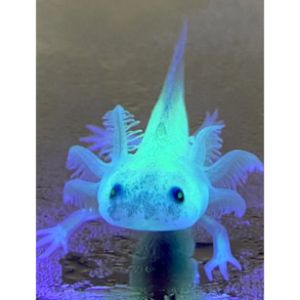
Axolotls can be captivating and enjoyable pets for those fascinated by their unique characteristics and willing to provide the proper care they require.
With their ability to regenerate limbs, various colors and patterns, and aquatic lifestyle, axolotls offer a distinctive and visually appealing pet ownership experience.
Ultimately, suppose you are intrigued by axolotls’ unique beauty and characteristics, willing to invest the time and effort into their care, and equipped with the necessary knowledge.
In that case, axolotls can be rewarding and fascinating pets to have in your home.
If you find this guide, “Do Axolotls Glow In The Dark,” informative and helpful, you can check out these other animal-related articles from our team:
You can learn more about axolotls by watching “Axolotl Facts: the PETER PAN Salamander 🦎 Animal Fact Filesl” down below:

